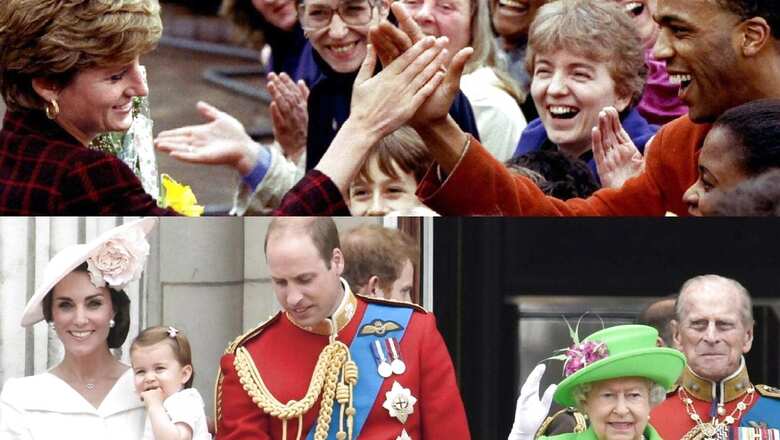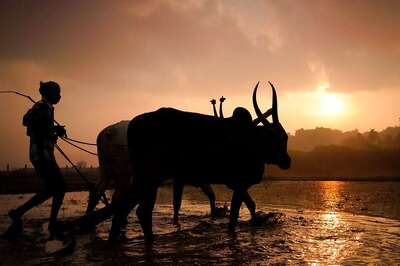
views
Catherine, who married the now heir to the throne Prince William in 2011, is now going to be the Princess of Wales. The title is being assumed for the first time since her mother-in-law late Princess Diana died in a car crash in 1997. There is now renewed attention on Catherine, popularly known as Kate or Kate Middleton, after the death of Queen Elizabeth II.
In some ways, it was the Queen’s history with Princess Diana that would shape up the commoner become royal Kate’s relationship with the late monarch. The Princess of Wales has proved a model royal since joining Britain’s most famous family. But in the starting, all wondered how the Crown would react to a non-royal joining their family.
However, unlike previous experiences and instances would go, the Queen seemed more of less accepting of Kate.
Kate’s mother-in-law Diana, and the legacy she left behind, may have had something to do with it. Most have a skewed version of Queen Elizabeth’s relationship with Diana: the former Princess of Wales a lonely outcast, out of her depth and drowning in royal pomp, watching helplessly as her heartless husband continued his extramarital affair while the cold and distant monarch looked the other way. However, the truth was more complicated.
For starters, Diana was far from an outsider. Diana’s younger brother, Charles Spencer had Queen Elizabeth as a godmother, and Diana’s father, Viscount Althorp, was the Queen’s equerry (personal attendant).
Although Andrew Morton, author of the 1992 tell-all book “Diana: Her True Story,” admits that the princess was terrified of her mother-in-law at first. Diana had little in common with her fiancé. The princess succumbed to depression and bulimia after suspecting Charles had never actually ended his affair with Camila. As royal biographer Ingrid Seward noted in her book “The Queen and Di,” no one came to her aid. According to Seward, after the wedding, the Queen was more “understanding of Diana’s difficulties,” and they formed a strong bond. Diana once boasted to Seward, “I have the best mother-in-law in the world.”
However, as Diana and Charles’ relationship became strained, so did her relationship with the Queen. The monarch began to dread the emotional princess’ unscheduled visits, according to Seward: “A footman said, ‘The princess cried three times in a half hour while she was waiting to see you.’ The queen replied, ‘I had her for an hour — and she cried nonstop.”
Queen Elizabeth reportedly wanted to assist her daughter-in-law but was unsure how. “There was a hope for Princess Diana that the queen would intervene and make things right in their marriage again,” Diana’s private secretary Patrick Jephson said in the Channel 5 documentary “Two Golden Queens.”
“However, there was a communication breakdown between two generations. Between two strong women,” wrote Jephson. “There was a school of thought among traditional royals that Diana should stop being silly.”
It was Queen Elizabeth who would grant Princess Diana and Charles a divorce. Later, the Crown was thought to be angry at Princess Diana’s relationships and public appearances, including the famous BBC interview where Diana would reveal all about her frayed marriage with Charles and his affair with Camilla (now the Queen consort).
When Princess Diana died in a tragic car crash in 1997, her passing away shocked the royal family to its core, there was public backlash over the Queen’s reaction (or lack of it). Her position as a symbolic and silent figurehead was reversed. While her initial reaction was to retreat to Balmoral and console her grandchildren, the people demanded that she do otherwise. “Show Us You Care!” screamed the tabloid headlines” and demanded that the Queen return to London and have the Union Jack lowered over Buckingham Palace.
The royals refused and followed protocol for five days, claiming that Diana was no longer a royal and thus should not be treated as such. Finally, then-Prime Minister Tony Blair stepped in, persuading the Queen to return and defuse tensions through a live broadcast to the nation. (Downing Street also pushed her to refer to herself as a grandmother.)
It is widely acknowledged that this was the only time during the Queen’s reign when she misread the mood of the country. “One of the many ironies of [the Queen’s] life is that Diana’s impact on the royal family is measured by how much more accommodating the house of Windsor is now to newcomers,” Morton wrote in the 2017 anniversary edition of his biography. And as journalist Tina Brown summarises in “The Palace Papers,” the Queen stated emphatically that it would never happen again — “the problem of the British monarchy being upstaged, outshone, drowned out by one overweening, dangerously popular member of the family other than the queen or the heir to the throne.”
And Kate became a positive presence for her grandmother-in-law as she grew more at ease in her senior royal role after marrying William. “More than anything, knowing she can rely on Kate and [William] to handle matters in her absence is the greatest comfort she could ask for,” a source told the US Weekly in August 2020, noting that Kate was the queen’s “rock” throughout the coronavirus pandemic.
“Her Majesty sees the Cambridges as the future of the monarchy and implicitly trusts Kate and William’s judgement,” the source was quoted as saying. “Kate seeks advice on upcoming speeches, who she can trust the most within the palace, and protocol dos and don’ts. The queen is eager to share her knowledge and is proud to do so.”
Elizabeth was not only a trusted advisor to both Kate and William until her death in September 2022 at the age of 96, but she was also a devoted great-grandmother to their three children: Prince George, Princess Charlotte, and Prince Louis. While the queen may appear solemn on the outside, she has a playful side, which Kate hinted at during a visit to Islington in London in January 2019.
Elizabeth was not only a trusted advisor to both Kate and William until her death in September 2022 at the age of 96, but she was also a devoted great-grandmother to their three children: Prince George, Princess Charlotte, and Prince Louis. While the queen may appear solemn on the outside, she has a playful side, which Kate hinted at during a visit to Islington in London in January 2019.
Read the Latest News and Breaking News here



















Comments
0 comment